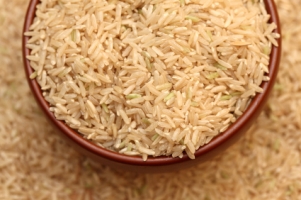Consumer Reports released a study this week regarding an investigation into arsenic levels in rice. After testing more than 60 rice products, the organization found there were “worrisome” levels of arsenic in all products.
Rice is the number one food source of arsenic in human diets, reportedly containing five times more than oatmeal.
Arsenic is an element found in nature and in man-made products, including various types of pesticides, according to My Health News Daily.
Because it is in the soil, plants absorb arsenic when they grow, which explains how it gets into our food products.
Because Consumer Reports detected “worrisome” levels of arsenic have been detected in our foods, experts are warning consumers to take caution, especially warning parents not to give more than one serving per day of infant rice cereal to their children.
Following the Consumer Reports investigation, which rested 60 rice products, the U.S. Food and Drug Administration is conducting its own full study and has already tested more than 200 rice products. Various products have included rice cereals and beverages, and the FDA has already found traces of arsenic in all products. In total, more than 1,000 products will be tested over the course of a year.
Where does this increased level of arsenic come from? According to a report from ABC News, years of arsenic-based fertilizers and pesticides added to the soil in farming has added increased levels of toxins to the soil. Rice is specifically affected because it’s grown in water and absorbs more arsenic than other grains.
Additionally, because white rice is polished and the outer layer is stripped in the process, brown rice is currently considered the more dangerous of the two.
While there is reportedly no immediate danger to consumers, there are steps we can take to ensure we’re not exposed to a excess amount of arsenic. Experts recommend not giving up rice entirely, especially since brown rice is a great source of nutrition. However, when cooking rice, wash it before you cook it until the water runs clear, just to be safe.
FDA commissioner, Dr. Margaret Hamburg explains why consumers need not avoid rice altogether. “Our advice right now is that consumers should continue to eat a balanced diet that includes a wide variety of grains – not only for good nutrition but also to minimize any potential consequences from consuming any one particular food.”
For those concerned about the risk arsenic poses, varying your diet to include a number of grains is the safest route to take until the full FDA study is concluded next year.
Also Read:
Do You Know What’s In Your Water?
